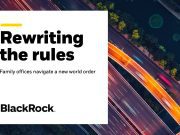3 Hot Tips for Personal Bankers in September
September is the most important month of the year. It is the beginning of the final lap for the year. And since December is a quiet month, you will only have 3 months or the next 90 days to make your year count: September, October, November.
Below are 3 tips on how you can recover lost sales or if you are way behind sales target, to cover the gap before another year is wasted for you.
No. 1 Tap onto CPF-OA funds / Pension Funds
If you have not tapped onto your client’s CPF for investments, it is time to do so. It is a great way to kick-start your sales engine, bring confidence to yourself and your sales numbers. As CPF has limited use (property and investments), most clients are quite willing to explore investment options.
If you have already tapped onto the funding, there is no harm trying again. Since everyone contributes to CPF regularly, there is bound to be an increased amount in their CPF account.
If you get about $20,000 per investment and work hard with 10 clients, you will get $200,000 of Unit Trust sales and revenue of about $4,000 to $6,000. This isn’t very helpful even for the month of September, let alone catching up for the rest of the year. But little drops, makes an ocean.
FAQ: What if I time the market wrongly?
Answer: You are not supposed to time the market. What is going to happen in 3 months or 3 years, nobody will know. That is why you get clients to invest into Unit Trust to diversify systemic risks. Investment is for long term, and is an ongoing journey. This ideally is not the only investment, client will ever made with you.
Warning: Try not do do SRS in August. If you do that, you must be pretty desperate. You will have bigger sales issue to deal with, this year and next year. Do SRS in November and December when you have nothing to do. Always focus on genuine wealth management solutions and finding qualified clients.
“Forecasting is like trying to turn lead into gold”
~ Warren Buffett
No. 2 Discover the True Meaning of Know-Your-Client (KYC)

Yes, we know $200,000 in sales isn’t going to help much. You need about $1 Million of sales to chalk up $20,000 to $30,000 of revenue. This will then get you on track and cover lost ground.
The reason why client invest with you, is because of the relationship with the bank and you. They have less time or knowledge to manage their investments, and would prefer somebody like you to monitor for them. It is always comforting to know someone is looking after their hard-earned money.
So although the initial meeting perhaps was to discuss about possible investment ideas using CPF funds, it is really an opportunity for you to use this precious time to build a stronger relationship with them. And importantly, uncover more possible financial needs (layman: do they have more money elsewhere?).
Know-Your-Client (KYC)
Understand about your client, family, career. Gather info what the other bankers or wealth managers are doing for them. Out of 10 customers, 3 will say you are the better one. That means 7 …. is indifferent with you. Now you know where you stand.
Work on the 3 customers, and get them to share more. You want to know how they make decisions, what are the good and bad experiences they have. Of course, not forgetting their deposits, funds flow and existing investments in other banks. Most clients prefer not to share all their financial information with you.
But what you can uncover from them will help you to get more sales. This is how important KYC can be to you.
FAQ: How can I get them to invest more?
Answer: You can’t. Nobody will invest more until you can understand what they need in life. And since investments had not really been a great experience for most people, you will have to understand them more by knowing their bad experience. As you feel their emotions, you will likely empathise with them, unless you have achieved true immunity or listened to such stories a thousand times.
No. 3 The Killer Sales Strategy

Since you are already struggling with your sales number, it is time to employ a killer sales strategy. Either you kill your sales or you double your sales. It doesn’t always work, but it works effectively over time, because you get better at doing it.
Assuming you had done a good job of uncovering client’s profile, potential money elsewhere, connecting with them personally, educating them about various investment opportunities and products:
Potential Sales Today: $50,000
Recommended Products:
- Unit Trust Balanced Fund: $30,000
- Unit Trust China Fund: $20,000
Above is what your client is seemingly comfortable in. And you are about to do the documentations.
The Bet: Increase the investments to $75,000 or $100,000.
(All clients have uncertainties at purchase, and you are afraid of your client cancelling the purchase – which you really should not because that means it is a bad transaction.)
At this point, you will raise the possibility –
Step 1: More possibilities
There are 2 other good investments that you can do: Unit Trust India fund and Unit Trust Japan Fund because ……. But if I recommend those, per investment size becomes too insignificant. And you stay silent for a while and start preparing for the documentations. And you pause for a while, looking through the portfolio and client’s account ensuring that you are giving a lot of thoughts on the portfolio allocation.
Step 2: Lowering the investment amount
Now you propose and discuss with your client if we should keep $20,000 for future investment into India and Japan fund. (Yes, you will lower the potential investment from $50,000 to $30,000) Client will be shocked. No one does that. And you have won the “ethical battle” which you should really feel proud of yourself. If you had done your KYC, you will have known that client has spare funds elsewhere. The worst case is client may reconsider or get confused and walk away from the entire investment.
Step 3: Emphasize Belief and Small allocation
” If you believe in something, putting $5,000 or $10,000 is not going to be meaningful. In addition, investments are for long term, wealth and income will grow, so a small allocation is inefficient for investment monitoring. ”
Then calculate $5,000 over $500,000 net worth (including property) and 10 years of salary is worth nothing.
The final move: The confirmation
Talk to the client and confirm that the allocation is $50,000 into the original proposed funds. Then use an alternative proposal, and leave the numbers blank.
Recommended Products:
- Unit Trust Balanced Fund: $30,000
- Unit Trust China Fund: $20,000
Alternative Proposal:
- Unit Trust Balanced Fund: 50%
- Unit Trust China Fund: 20%
- Unit Trust India Fund: 15%
- Unit Trust Japan Fund: 15%

The customer will start to fill the numbers themselves. And if you look at 50 + 20 + 15 + 15 = it becomes $100,000.
Now you just wait for the moment of truth. If you had done up sales process, KYC, connecting with clients well, he would top up another $20,000 or the total investment of $100,000. After all, you deserved to manage their money for conscientiously thinking about them.
* The fund names are for illustration only
So good luck with these 3 tips to making September count and hitting your sales target for the rest of the year.
” The top salesperson in the organization probably missed more sales than 90% of the sales people on the team, but they also made more calls than the others made ”
~ Zig Ziglar
Sign Up / Register
Caproasia Users
- Manage $20 million to $3 billion of assets
- Invest $3 million to $300 million
- Advise institutions, billionaires, UHNWs & HNWs
Caproasia Platforms | 11,000 Investors & Advisors
- Caproasia.com
- Caproasia Access
- Caproasia Events
- The Financial Centre | Find Services
- Membership
- Family Office Circle
- Professional Investor Circle
- Investor Relations Network
Monthly Roundtable & Networking
Family Office Programs
The 2025 Investment Day
- March - Hong Kong
- March - Singapore
- July - Hong Kong
- July - Singapore
- Sept- Hong Kong
- Sept - Singapore
- Oct- Hong Kong
- Nov - Singapore
- Visit: The Investment Day | Register: Click here
Caproasia Summits
- The Institutional Investor Summit
- The Investment / Alternatives Summit
- The Private Wealth Summit
- The Family Office Summit
- The CEO & Entrepreneur Summit
- The Capital Markets Summit
- The ESG / Sustainable Investment Summit




























